Ever practice piano… without the piano? It may seem strange, but in order to make richer, more expressive music, you need to use all the tools at your disposal. And I want to give you a few that you may have not thought of before. In the first article of this series, I asked you to put down your scores in order to practice listening with your ears in a new way. This time, I want you to not only put down your scores, but walk away from the keyboard too. Because today I want you to start learning how to listen… with your body.
I’ve played piano my entire life: from a fully hearing child pianist to a moderate-hearing-loss professional musician to a profoundly deaf composer. And just like I acquired the skill of lipreading through necessity but without realizing it, somewhere along the way I also picked up the skill of playing piano without hearing most of the notes. It took the constant queries of “how the heck do you still play so well?” to force me to step back and articulate the techniques I’m using.
Here’s in essence what I’ve learned through doing. Your body is both a receiver of music and an expressive tool for creating it. A receiver via your ears of course, but also throughout your entire human form. At the same time, your body generates music not only in the way your fingers strike the keys, but in how your wrist rotates, your arms fall, your torso leans. Essentially, when you play the piano, your body’s movement creates music.
Take a walk to see this in action. Listen to your natural rhythm. Change it up with a brief skip, a short dash, a slow stride. See how quickly you’re making music?
As the theoretical neurobiologist Mark Changizi explains in his book Harnessed: How Language and Music Mimicked Nature and Transformed Ape to Man, solid objects interacting create most of the sounds in the world—like your shoes hitting the sidewalk. Since every gait has rhythm and beat, and because humans needed to track movement around them, mimicking these sounds formed the basis for all language and music.
You can see this movement = music equation most clearly when watching percussionists play timpani, cymbals, and bells. Each swing of the mallet and cymbal crash translates movement into music directly. The piano, which is technically a percussion instrument, does the same thing with its hammers.
As you walk, also notice how movements driven by different emotions create distinctly different sounds: a contented stroll sounds lighter than an angry stomp or an impatient tap. These same movements in miniature create the piano’s tone and volume as your fingers walk, dance, race, slam, stomp, and caress the keys. Practice these motions in the air or on the piano lid, and you’ll soon “hear” the notes even without making a sound.
* * * *
There’s another way to listen to music with your body, and that’s literally listening through the vibrations. When you took your musical walk, each step created a unique sound wave. These “waves” aren’t like waves in the ocean. I see them more like mini explosions or fireworks. They spread out spherically in all directions, arriving not just into your ear, but hitting your entire body.
Probably you’ve felt loud sounds punching your gut, like when a semi rolls by or the beat thumps at a club. The same experience can happen at the piano. If you pound out a thunderous chord, you can feel it hit you. In time, you can increase your sensitivity and feel quieter notes in your gut, your chest, even on the hairs of your arms.
But sound doesn’t only travel through the air, it travels through mass too, via conduction. Singers experience this often, because their voices vibrate the bones in their head and chest. Some people with hearing loss wear bone conduction hearing aids, which transfer vibrations through the skull instead of through the external auditory canal. On your walk, you might notice the vibrations of each step radiating up your leg.
Beethoven famously chopped the legs off of his piano in order to better feel the vibrations. By placing the piano directly on the floor, the entire floor would have become a soundboard—transferring the vibrations from strings, to the piano soundboard, to piano body, to floor, and through the floor to Beethoven’s body. Perhaps he sat directly on the floor to increase the surface area of his body that received the vibrations.
You can experience this in a small way by pressing deeper into the keys when you play, and keeping your fingers down during held notes. The vibrations of the piano will transfer to the keys and into the bones of your fingers. Place your feet on the floor (without shoes) and you may often feel the vibrations radiating up your legs.
Very quickly you’ll begin to detect loud vibrations from quiet vibrations, and since higher pitches vibrate faster than low pitches, it is certainly possible—though difficult—to sense pitch too. The deaf percussionist Evelyn Glennie trained herself to distinguish between different vibration types and pitches.
The point here, though, is to deepen your experience with music. You don’t need to become an expert in vibrations. Just pay attention to your body and use it fully.
Remember, “for every action there is a reaction.” You contract muscles, then let arms fall and fingers dance across the keys. In reaction, the piano produces sound waves that simultaneously fly into your skin, muscles, face, while transmitting vibrations directly into your fingers. Through awareness of this circular experience, you can become one with the music—in an instant, both generating and receiving sound.
So get practicing and walking. And in the next installment, we’ll explore an even more radical way to practice listening… listening with your eyes.
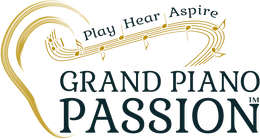
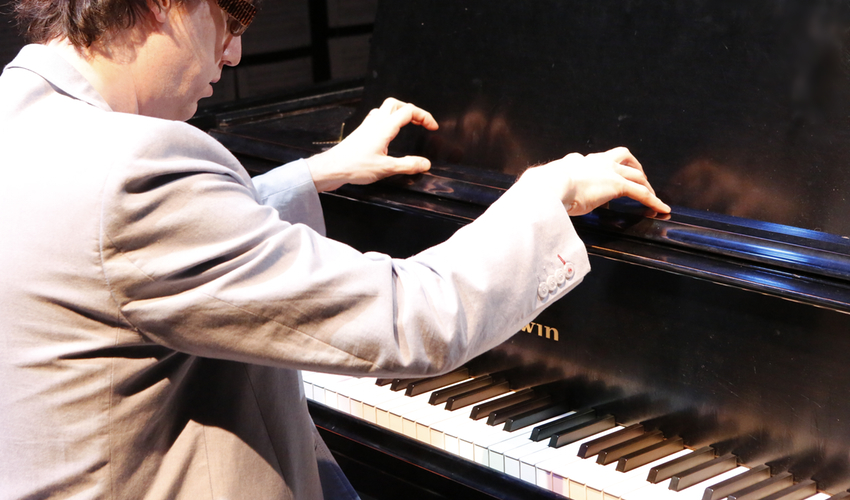
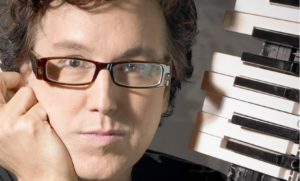
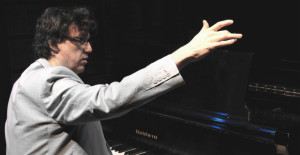
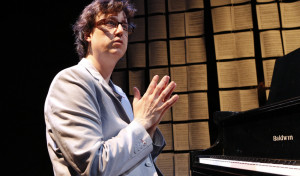
0 Comments